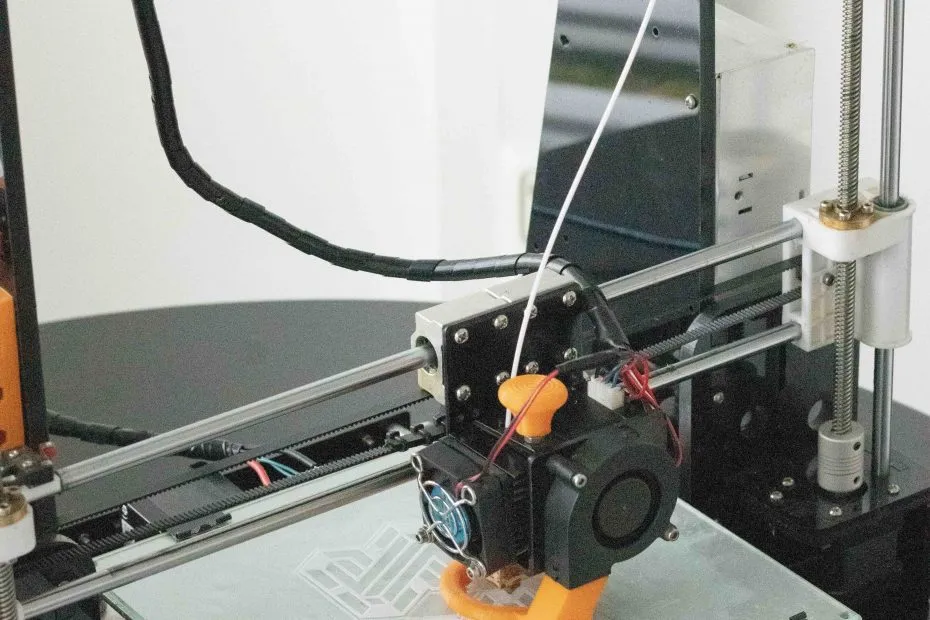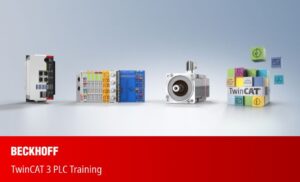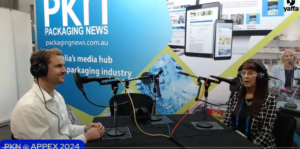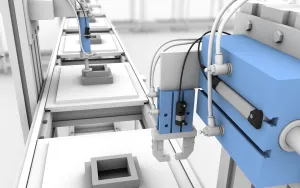The concept of Industry 5.0 – developing Artificial Intelligence to work alongside robots and smart machines- has been an increasing topic of conversation in the global manufacturing landscape. However, a number of key manufacturing insiders have argued that Australia still needs to get to grips with Industry 4.0 before we can move on to the next phase of industrialisation.

“The guiding principle of Industry 4.0 is the interconnecting of new technology to improve efficiency and productivity,” explains Nick Psahoulias, Managing Director of Beckhoff Automation and member of Open IIoT. “This requires manufacturers to scale-up their operations by adopting Industrial Internet of Things (IIoT) technologies on the factory floor and unfortunately, many local manufacturers are still lagging behind in the digital transformation process.”
As a Foundation Partner of the Modern Manufacturing Expo, Open IIoT hopes to encourage more local manufacturers to join the manufacturing digital revolution and help them to realise the practical benefits of embarking on this process.
“Joining the Modern Manufacturing Expo as a Foundation Partner was a natural fit for our group, as it shares our mission to create a stronger and more sustainable manufacturing sector in Australia by harnessing the power of technology,” Nick adds.

Open IIoT is an initiative of some of Australia’s most prominent automation brands – SMC Corporation ANZ, Beckhoff Automation, NORD DRIVESYSTEMS, Balluff, ZI-Argus and KUKA Robot Automation. The cohort believes that in order to help manufacturers unlock IIoT opportunities for commercial value, it is first crucial to cut through the jargon and dispel misconceptions surrounding this topic.
“We believe in less talk, more action. Australia needs more manufacturers to adopt practical, easily implementable technological solutions on the factory floor so that Industry 4.0 can move away from being seen as a ‘buzzword’ but rather a series of tools with real-world applications,” he explains.
Truly modern, flexible manufacturing
One such ‘practical’ technology taking the Australian manufacturing sector by storm is the rise of additive manufacturing. As a definition, additive manufacturing is a transformative approach to industrial production that enables the creation of lighter, stronger parts and systems thereby minimising waste.
It uses data from Computer-Aided-Design (CAD) software or 3D object scanners to direct hardware to deposit material, layer upon layer, in precise geometric shapes, to create an object. The technology can be used to build or repair advanced metallic structures such as replacement or customised machine components and aircraft engines.
The design freedoms acquired through additive manufacturing methods such as 3D printing provide designers with countless opportunities to optimise parts for performance by removing the material and design limitations imposed by traditional manufacturing methods. 3D printing also provides opportunities for unitisation and cost savings where previously joined parts are made into a single unit.
By harnessing the power of automation and computer-generated design, additive manufacturing is set to become a core component of the Modern Manufacturing movement. “A key benefit of these emerging Industry 4.0 technologies is that they offer new ways to manage our productive assets, amplify our human asset contributions and significantly improve the product’s relationship with customers,” says Nick.
Environmental advantages of additive manufacturing
“A potential advantage of additive manufacturing is the role that it may play in helping Australia meet the global goal of reducing our carbon equivalent emissions by 50% by 2030; and by 100% by 2050.”
Traditional manufacturing is a significant global contributor to climate change. “It results in massive waste and emissions that could be reduced if a more modern, technology-driven approach to manufacturing is followed,” Nick comments.
The good news is that research has indicated that additive manufacturing is more sustainable than conventional manufacturing methods and has a reduced impact on the atmosphere and the environment.
Because parts can be designed to exact specifications, additive manufacturing uses only the material needed to create the component, unlike machining and other subtractive manufacturing techniques. This results in less material waste, energy usage and machine emissions.
Collaboration between academia and industry essential
To take advantage of these new technologies, local manufacturers need to get an understanding of how these tools work and the steps involved in implementing them on the factory floor. Unfortunately, while many smaller manufacturers are interested in adopting advanced manufacturing methods, they do not have the budget or knowledge necessary to do so.
This is where NSW manufacturers have a unique advantage, as they are able to experiment with new technologies at the Sydney Manufacturing Hub, an initiative of Modern Manufacturing Foundation Partner Sydney University. The Hub gives manufacturers a place to test out tools, get help from researchers on how to implement these in their companies and get the base work done before making a large investment.
“Collaboration between academia and industry is essential to bridging the resource gap and democratising access to Industry 4.0 technologies such as additive manufacturing for smaller manufacturers. Once this gap is closed and more local manufacturers are up to speed with modern manufacturing techniques, we can start looking ahead to the next stage of industrialisation,” Nick concludes.
This article was originally published on Manufacturer’s Monthly. Check it out Here







